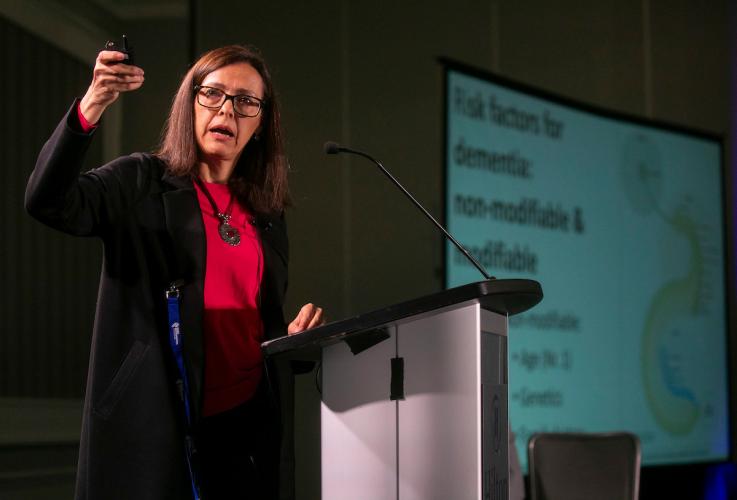
Ohio Osteopathic Symposium speakers explain the role infections may play in Alzheimer’s Disease

Researchers are uncovering new evidence showing infection may play a significant role in the development of Alzheimer’s disease. Scientists have long believed that Alzheimer’s disease starts with the formation of amyloid plaques leading to cognitive decline. As a result, research has primarily focused on how to reduce the plaques. However, a growing number of scientists are exploring whether infection-causing pathogens are responsible for causing or aggravating Alzheimer’s.
According to the pathogen hypothesis, some pathogens, like herpes simplex virus and Chlamydia pneumoniae – a major cause of pneumonia, may travel through the nose to the brain, where they go undetected. The speculation is that these infectious microbes cause low levels of inflammation in the brain, resulting in tissue damage. In response, the body produces higher than usual amounts of amyloid, a naturally occurring protein, which clumps together, forming amyloid plaques in the brain.
“If you generate inflammation in the nervous system, you will generate damage. And in chronic inflammation, you generate chronic damage. The hallmark of chronic inflammation is tissue damage, tissue dysfunction. That’s what we see with Alzheimer’s disease,” said Brian Balin, Ph.D., director of the Center for Chronic Disorders of Aging at the Philadelphia College of Osteopathic Medicine. He is also the Osteopathic Heritage Foundation Endowed Chair for Aging Research in Honor of Ruth E. Purdy, D.O., George O. Faerber, D.O., and Peter E. Johnston, D.O. “Some people think amyloid causes the disease. We actually think amyloid is a response to the damage of nerve cells and glial cells in the brain.”
Balin and Graciela Muniz-Terrera, Ph.D., Osteopathic Heritage Foundation Ralph S. Licklider, D.O. Endowed Professor in Health and Aging at the Ohio University Heritage College of Osteopathic Medicine, shared the latest research findings looking at infections as risk factors for Alzheimer’s disease at the Ohio Osteopathic Symposium. During the J.O. Watson Memorial Lecture, they told audience members there is a lot we don’t know and understand about the modifiable risks that affect people as they age.
Scientists began making the connection between infection and Alzheimer’s disease in the 1990s. Balin said scientists researching the disease came up with the theory about infections when they asked what was causing the inflammation.
Since then, researchers have found several bacteria, including Porphyromonas gingivalis which contributes to periodontitis; as well as herpes; SARS-CoV-2, which caused COVID-19; parasites and the fungi Candida in the brain tissue of patients with Alzheimer’s disease. Balin said several studies have been published recently suggesting that older patients who contracted COVID-19 are at an increased risk of having Alzheimer’s disease and many have already been diagnosed.
“The question becomes, did the virus cause that? Did it lead to some other type of issue in the brain, another infectious agent or inflammation in general,” said Balin. “So, we’re still trying to figure that out, but there is a relationship there too with Alzheimer’s.”

Balin said a consortium of investigators is looking more closely at what triggers Alzheimer’s and to see if infections may be a contributing factor.
“Part of the problem is that we don’t know when these organisms are moving into the brain,” said Balin. “Alzheimer’s takes 20 years to manifest so that might be reflective of low-level migration that we’re not recognizing.”
Many questions related to the connection between infection and neurological conditions remain unanswered. To answer those questions, Muniz-Terrera pointed out, “We need the data, but [the pathogen hypothesis in Alzheimer’s] is not tested on a regular basis.”
Balin said the medical field needs to start considering whether patients have infectious agents if they present with dementia or symptoms of Alzheimer’s disease. He said it is also important to consider the environment and other risk factors that the patient may have been exposed to. Eventually, he said, the disease could be reversable if it’s diagnosed differently.
